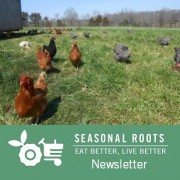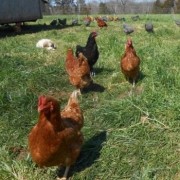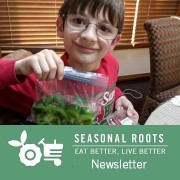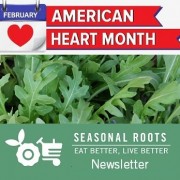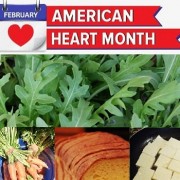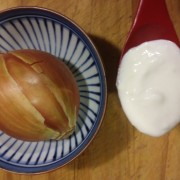Lots of pasture and NO pesticides, antibiotics, hormones, or GMOs at this local farm
– By the Veggie Fairy Team
There’s no such thing as a chill chicken. Pigs may be laid back. But laying hens are in a constant state of panic, as if today could be their last. That’s what Oliver has observed since his parents started farming a dozen years ago when he was 12. Relying on humane farming practices, they raised cows, pigs, and chickens at Avery’s Branch Farms in Amelia, Va.
“Now and then we have some hens that like to be petted, but that’s just a random individual,” Oliver says. “I’ve never heard of a super chill chicken.”
So apparently, Chicken Little, who famously ran around crying, “The sky is falling! The sky is falling!” was a pretty typical chicken. But can you blame her? For a chicken, the world is full of imminent death and dismemberment by raccoons, possums, bobcats, coyotes, foxes, untrained dogs, and as if that weren’t enough, hawks from above. When you’re raising chickens, the temptation is to lock them away inside where it’s easier to raise them.
Easier. But not healthier. And the resulting flavor’s nothing to write home about, either. Being stuck inside doesn’t even make the chickens any less frantic.
The humane farming backstory
Avery’s Branch Farms has been supplying Seasonal Roots and other Virginia families for a long time. We love how the hens have access to pasture year-round. Grass makes up 50% of their diet. The rest of what they eat includes insects, worms (chickens are not naturally vegetarian, which is why those “100% vegetarian feed” claims are not necessarily a good thing), plus local, non-GMO grain. During the winter when the grass isn’t growing, the grass portion of their diet is supplemented with alfalfa, a high quality hay.
Even when it’s cold out the girls always have outdoor access. So they’re able to do all the natural things that make a chicken happy — grazing, pecking, scratching, and flying short distances out in the fresh air and sunshine. As a result, they naturally stay healthier.
According to Oliver, “We never use pesticides, antibiotics, or hormones. Our animals are kept healthy by their exceptional diet and environment. In return they give us the healthiest, tastiest products.” And the chickens are kept safe from predators under the watchful eye of trained, hen-loving dogs. The chickens are as naturally frantic as ever, but they’re happy and safe and truly pasture-raised.
That’s a much higher standard than “cage-free”, which means the birds are not confined in a tiny cage but are still kept indoors, roaming around inside long, low, crowded warehouses. Pasture-raised is better than “free-range” too, which usually just means the chickens have minimal access to an outside concrete pen while spending most of their lives stuck inside like the cage-free birds. For an excellent explanation of the difference between cage-free, free-range, and pasture-raised, read this.
A local farm success story
Out of the six kids in the Avery’s Branch family, Oliver is the one in charge of their pasture-raised chickens. He recalls, “I had always wanted to partner with restaurants to offer the same life-giving products to restaurant-goers we had always offered to our family customers. With the help of the nearby Amish community, we started delivering to restaurants and it was a big hit. Soon we had to increase our flocks to accommodate the demand.”
Seasonal Roots helped Oliver introduce more Virginia families to the goodness of his family’s pasture-raised eggs. Just like Virginia’s high-end restaurant chefs, we could all see and taste the difference that a grassfed diet makes (more on that in a minute). But the restaurants needed a consistent supply to make pasture-raised eggs a regular part of their menus, and so did we. A bigger flock made the small family farm in Amelia a more dependable supplier to everyone.
They started out with five hens and a rooster in 2005. Today their flock has grown to 3,800 and the egg business is big enough for Oliver, now 24, to make the flock his own and launch (cue the drumroll…) AUTHENTICITY FARMS!
Even as the flock has grown, Oliver’s commitment to his family’s humane farming practices has remained the same. So one local sustainable, humane family farm is now two. Seasonal Roots members can pat themselves on the back for being part of making that possible.
The health benefits of pasture-raised eggs
Humane farming practices aren’t just good for the animals. They’re good for the humans, too. A pasture-raised egg looks different from an industrial farmed egg, even if it’s cage-free or free-range. A pasture-raised yolk is deep orange surrounded by a thick, milky white. The flavor is richer. And it offers higher amounts of vitamin A, D, E, K2, B-12, folate, riboflavin, zinc, calcium, beta carotene, choline, and tons of omega 3 fatty acids, including DHA, EPA, ALA, and AA.
A pasture-raised egg offers the highest quality protein, second only to the lactalbumin protein in a human mother’s milk. It is a true superfood. A study found that compared to industrial farmed eggs, the benefits of pasture-raised include:
1/3 less cholesterol
1/4 less saturated fat
2/3 more vitamin A
2 times more omega-3 fatty acids
3 times more vitamin E
7 times more beta carotene
3-6 times more vitamin D (thanks to hanging out in all that sunshine!)
We’re proud to support the humane, healthful, life-giving work of the newest addition to our market, Authenticity Farms!
Visit the Authenticity Farms website for more on Oliver’s goals and mission.
Visit the Avery’s Branch Farms website to get to know the family and their principled approach to farming.
ABOUT SEASONAL ROOTS
Since 2011, Seasonal Roots’ online farmers market has connected Virginia families with local family farmers who use sustainable, humane practices. Our veggie fairies – mostly moms who believe in living better through scrumptious, healthy eating, being kind to animals, protecting the environment, and spreading joy – home-deliver freshly harvested produce, eggs, grass-fed dairy and meat, plus artisan fare. We empower our members to eat better and live better with more nutritious, flavorful food that’s good for us and good for the planet. More info at seasonalroots.com.
